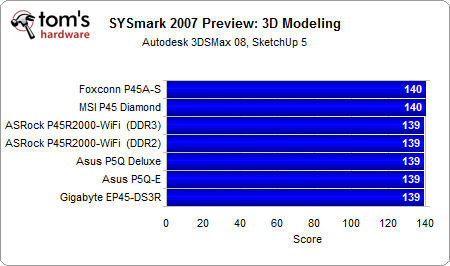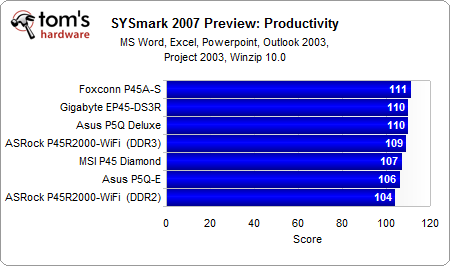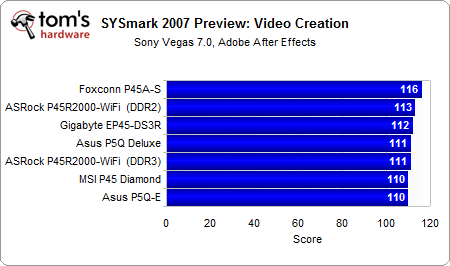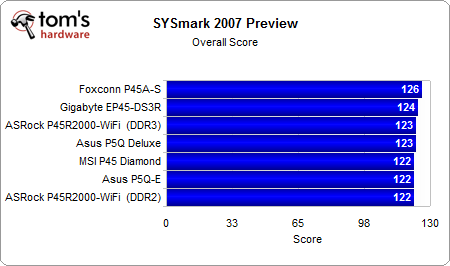Power-Saving Motherboards: Fact Or Fiction?
Test Setup, SYSmark 2007 Results
| CPU II | Intel Core 2 Duo E7200 (45nm, 2.53 GHz, 3MB L2 Cache) |
| RAM DDR2 | 2x 2 GB DDR2-800 Chaintech AU2G732-12GH001 |
| RAM DDR3 | 4x 1 GB DDR3 Crucial BL12864BA1608 at DDR3-1066 speed |
| HDD | Seagate Barracuda 7200.11, 500 GB |
| Row 4 - Cell 0 | 7,200 RPM, SATA/300, 32 MB cache |
| DVD | LG GGW-H20L |
| Graphics Card | GeCube Radeon HD 4850 |
| Row 7 - Cell 0 | GPU: 625 MHz |
| Row 8 - Cell 0 | RAM: 512 MB GDDR3 (993 MHz) |
| Power Supply | Cooler Master RS-850-EMBA 850W |
| Operating System SYSmark Windows XP SP2 |
| DirectX 9 Version: April 2007 |
| ATI Graphics Drivers Radeon 8.8 |
| Intel Chipset INF: 9.0.0.1008 |
| Java Java Runtime Environment 6.0 Update 1 |
| Benchmark | Details |
|---|---|
| SYSmark 2007 Preview | Version 1.04Official Run |
Testing for this review doesn’t focus on performance, but on power consumption and efficiency. If you’re interested in a performance and features shootout of P45 motherboards, please see our 11-Way P45 Motherboard Shootout or the chipset introduction article P45—The New Chipset Lacks Progress.
SYSmark 2007 Preview Results
Noticeable performance differences are evident among the test products, but most of these differences aren’t significant. Let’s have a look:



The Productivity benchmark includes Microsoft applications as well as WinZip 10.0, making it representative for many business users. In this run, there are noticeable differences. Foxconn does very well again.


The overall results show that most of the boards perform similarly, though Foxconn has a slight edge over the others
Get Tom's Hardware's best news and in-depth reviews, straight to your inbox.
Current page: Test Setup, SYSmark 2007 Results
Prev Page MSI P45 Diamond Next Page SYSmark 2007 Power And Performance Per Watt